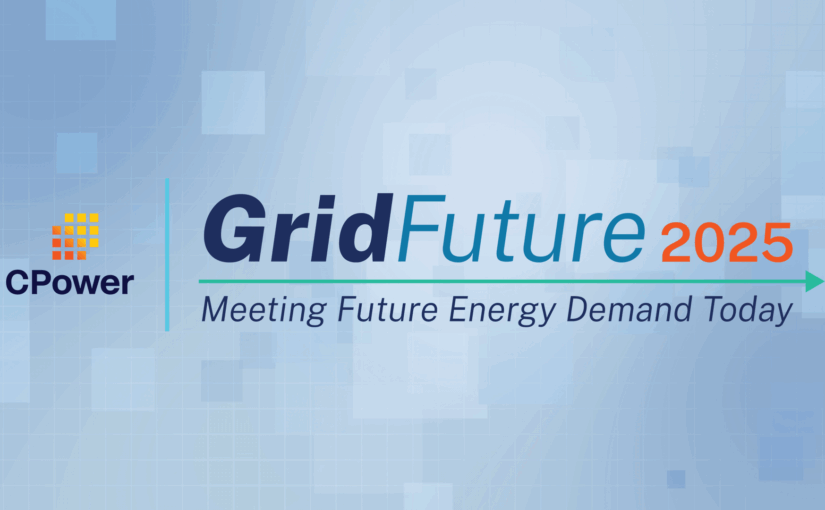Building Power Supply Isn’t the Only Way to Win the AI Race

The “AI Race” is seen as this decade’s Space Race: a signal of American leadership and competitiveness globally, and a key priority of the Trump administration. There are significant economic ramifications as well, with the U.S. AI market having the potential to measurably impact GDP beginning in 2027.
However, the future of mega-energy-intensive industries like AI depends on our power grid. Therefore, the country risks missing out on an AI economic wave — over $100 billion in market growth over the next five years — due to a lack of energy.
This potential lack of energy is somewhat of an elasticity issue. If you were to think of the grid as a rubber band, in its current form, it can stretch to accommodate more demand, but only if pulled in the right way, at the right times. That is, in meeting the need for electricity during the approximately 40 hours a year that the grid is stretched thin to its full capacity, we could unlock new capacity to expand critical industries like AI.
However, instead of strategically stretching the grid periodically as needed, regulatory conversations and political action to address our supply and demand imbalance tend to emphasize putting steel in the ground: building more of the supply-side and grid infrastructure solutions that the power industry has relied on for decades.
Even with President Trump’s efforts to accelerate new energy generation, building nuclear and natural gas power plants are still long-lead, capital-intensive projects that are a 15-year solution to a five-year problem. U.S. electricity demand is projected to grow 25% by 2030 compared to 2023 levels, outpacing supply and pushing power prices up as much as 40%.
We need immediate solutions to compete in the global AI race, and there are untapped gigawatts of power already available in our current electricity system. Instead of only adding supply, we can also reduce peak demand by aggregating large, flexible loads and other customer-sited energy assets into virtual power plants (VPPs).
Estimates gauge that this approach would unlock nearly 100 gigawatts of growth potential on our grid. Adding that same amount of capacity by building new natural gas plants would cost close to $100 billion and take years — if not over a decade — to achieve. Able to be deployed in months without costly infrastructure investments, VPPs provide flexibility to our existing grid by using customer energy assets such as flexible load reduction, battery storage systems, solar panels and smart thermostats to level supply and demand. They currently provide 30 GW to 60 GW of capacity in the U.S. — about 6-12% of the country’s total natural gas capacity — but VPPs have not reached their full potential. The Department of Energy has reported that accelerating VPP deployment to reach 80 GW to 160 GW can support the rapid rise in energy demand and help reduce price spikes.
Turning our AI ambitions into reality requires regulators and policy makers to prioritize VPPs as a competitive edge in the AI race and enable our existing grid to support more economic growth.
First, we need to incentivize energy flexibility among large energy customers. If new demand drivers, like AI data centers or crypto-mining facilities, join VPPs and participate in demand-side flexibility programs, they can access the energy they need faster, support the grid, and drive economic growth in the U.S. Those same VPPs also serve as opportunities for all types of large energy users to enroll and offset their rising energy costs. Regulators should embrace this VPP participation, which meets demand by stretching the grid. For example, in Texas, Senate Bill 6 was approved by legislators and will require new large loads like data centers to participate in load management — a model we may see other parts of the country adopt.
Second, we need to lift key restrictions on VPP participation. Despite FERC Order 2222, which was designed to promote VPP participation, implementation in some power markets has fallen well short of FERC’s vision. Regulators can encourage increased VPP enrollment by ensuring customer energy assets can participate in multiple grid programs simultaneously and by allowing local utilities to dispatch VPPs.
And finally, we need to push for improved access to meter data. In the U.S., many electricity customers have a smart meter that produces real-time data about their power consumption, but most utilities restrict access to this data. If state and energy regulators helped give VPP operators and their customers better access to non-sensitive meter data, it could spur faster payments for participation, more customer sign-ups and an acceleration of available distributed resources across the country.
In short, it’s high time we cut the bias and treat distributed energy as equivalent to supply-side solutions. A dispatched demand reduction through a VPP is functionally identical to a dispatch of increased generation from a peaker power plant.
By rapidly accelerating VPPs, which are already proving their worth across the country, we can help capture the near-term value of an American AI renaissance. If AI companies embrace energy flexibility, driven by regulatory and policy support, this power-hungry industry will go from a grid problem to an economic solution that helps the U.S. compete on the global stage.
Michael D. Smith is CEO of CPower Energy, which operates a virtual power plant platform across more than 23,000 commercial and industrial customer sites in the U.S.
AI, Data Centers and the Grid’s “Holy Grail” – Here are 4 Takeaways on Demand Response from GridFuture

While demand response has long played a vital role in energy management, its importance was on full display at CPower’s GridFuture 2025, hosted in Washington, DC, in early August, as stakeholders across the industry noted its importance in tackling unprecedented grid challenges. Paying customers to use less electricity when demand peaks or electricity prices are high is increasingly seen as an efficient means of supplying the power needed to support innovation and spur economic growth.

1. Demand response is a $15B engine for grid and economic resilience.
“This is a pivotal moment in our country’s energy history for demand response. But this isn’t just CPower’s story – it’s a growing chorus across the energy sector,” CPower CEO Michael D. Smith said at GridFuture 2025, the company’s annual thought leadership conference focused on advancements in demand response, distributed energy and virtual power plants.
“It’s because of everyone in this room, and many more out across our ecosystem, that we can drive meaningful outcomes for our customers, for the grid, for our communities and our economy. And that collaboration is essential as we continue to face new challenges as an industry.”
With demand growing faster than new capacity can be built, faster-to-deploy solutions such as demand response bridge the expanding gap between supply and demand. For example, from June 1 to August 1, CPower and its customers across the US provided ~34,000 MWh of load relief during the hottest days of summer, stabilizing the grid and keeping our communities going.
“Demand response acts as the grid’s great economic shock absorber. In times of volatility or disruption, it helps smooth out price spikes while freeing up capital that customers can reinvest elsewhere, including job creation,” Smith said.
Properly utilized, demand response could deliver $15 billion in annual savings nationwide, providing a strategic lever for businesses and the economy. “Great value comes from taking existing assets and leveraging them more effectively and efficiently,” Smith said.

2. The Knowledge Economy demands a smarter, more dynamic grid.
The factor driving the call for more capacity and the biggest economic gains also offers the most immediate and efficient solution: artificial intelligence. More specifically, data centers for AI compute companies, hyperscalers, crypto miners and other large energy users can become grid assets through demand response.
“Data centers are not new, but what is new is the way that AI is pushing the load associated with data centers. AI is changing what load growth looks like and has raised questions about what the next five to 10 years will look like,” said GridFuture 2025 keynote speaker Morgan Scott, vice president, Global Partnerships and Outreach at EPRI.
From transportation to manufacturing to healthcare, AI impacts every industry, requiring exponentially more electricity. “This is creating the knowledge economy, with data centers as knowledge factories. It’s imperative to ensure they have the power they need so that they continue to drive economic growth,” Scott said.
Touching on EPRI’s DCFlex initiative, Scott noted that data centers can leverage flexible energy from energy assets like on-site generation, thermal energy storage, cooling systems or compute workload.
At GridFuture 2025, innovators from Mercury Computing, Emerald AI, Bentaus and Miratech elaborated on unlocking flexibility from data centers. They explored how new technologies enable data centers to adjust power use dynamically, increasing their value to the grid.

3. AI loads are the new frontier of grid flexibility.
“The narrative is starting to change to realizing we can bring stability and resiliency to the grid by working with CPower and others to flex load,” said Bob Davidoff, CEO and Founder, Bentaus.
AI compute load is particularly flexible because power consumption can be adjusted around workloads such as training, fine-tuning and inference. “We need to stop thinking of AI as inherently inflexible and start seeing it for what it is: the Holy Grail of demand-side management,” said Varun Sivaram, CEO, Emerald AI.
“Most end users are focused on results, not where the processing happens. That gives us the power to shift compute in ways that maximize the infrastructure we’ve already built,” he continued.
Some markets connect data centers to the grid sooner for participating in demand response. “Time-to-power is critical to data centers. That is what has allowed the idea of flexible data centers to take root,” said Monty Prekeris, Co-Founder, Mercury Computing.
In some cases, demand response may be required as utilities and grid operators struggle to accommodate large data centers and other large loads.
For example, Texas Senate Bill 6 gives the Electric Reliability Council of Texas (ERCOT) the authority to curtail energy users with electric loads over 75 MW during grid emergencies, such as summer heatwaves when demand peaks or winter storms when power supply can wane.

4. There is no year-round grid reliability without demand response.
Traditionally used to keep the lights on during sweltering summer days, demand response has become a year-round resource with extreme weather creating demand peaks across all seasons. Utilities and grid operators also turn to demand response resources more frequently and on shorter notice to balance the grid amidst rapid shifts in supply or demand due to intermittent generation or other factors.
As demand response has become more accepted and encouraged, it has also become increasingly automated and optimized. And it has expanded beyond curtailed load, encompassing distributed generation, storage, microgrids, smart thermostats, EV chargers and other energy assets. The resulting multitude of complex demand response programs spanning capacity, energy and ancillary services makes simplification paramount.
“We literally have a Saudi Arabia of latent flexibility capability that we have yet to unleash, and we need to do that given the anticipated demand growth in our country. But to leverage it, we need to engage with customers without interrupting their business,” said Ken Schisler, Chief Legal and Regulatory Officer, CPower, in introducing a customer flexibility panel discussion at GridFuture 2025.
Panelists from commercial real estate, transportation and manufacturing shared how they have tailored their load management strategies to their specific industries, as well as best practices for navigating market participation and steps for optimizing their energy assets in grid service programs.
Reflecting on lessons learned from the panel and other GridFuture 2025 presenters, Smith noted the collective impact. “We’ve gained clarity on where our industry is, the vision for what it could become and what actions the industry needs to bridge that gap.”
Glenn Bogarde
As CPower’s Chief Sales and Marketing Officer, Glenn has led the company’s sales team on a nationwide mission to help customers unlock the most value from their flexible energy assets. Glenn has more than 20 years of sales experience in the enterprise software and energy industries.




